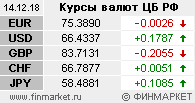Non-ferrous coin blanks
It has worked out historically that circulation coins in any country reflected the level of state economic stability. First coins were made of precious metals but later they were changed to non-ferrous metals due to the same application properties for much less cost.
GURT LLC produces blanks out of copper-nickel, aluminum-bronze and brass alloys. The most distributed alloys used at GURT LLC are:
· CuNi25;
· CuNi19 (substitute for CuNi25 due to 8% price reduce);
· Cu92Al6Ni2 (aluminum bronze);
· Cu89Al5Zn5Sn1 (Nordic Gold).



